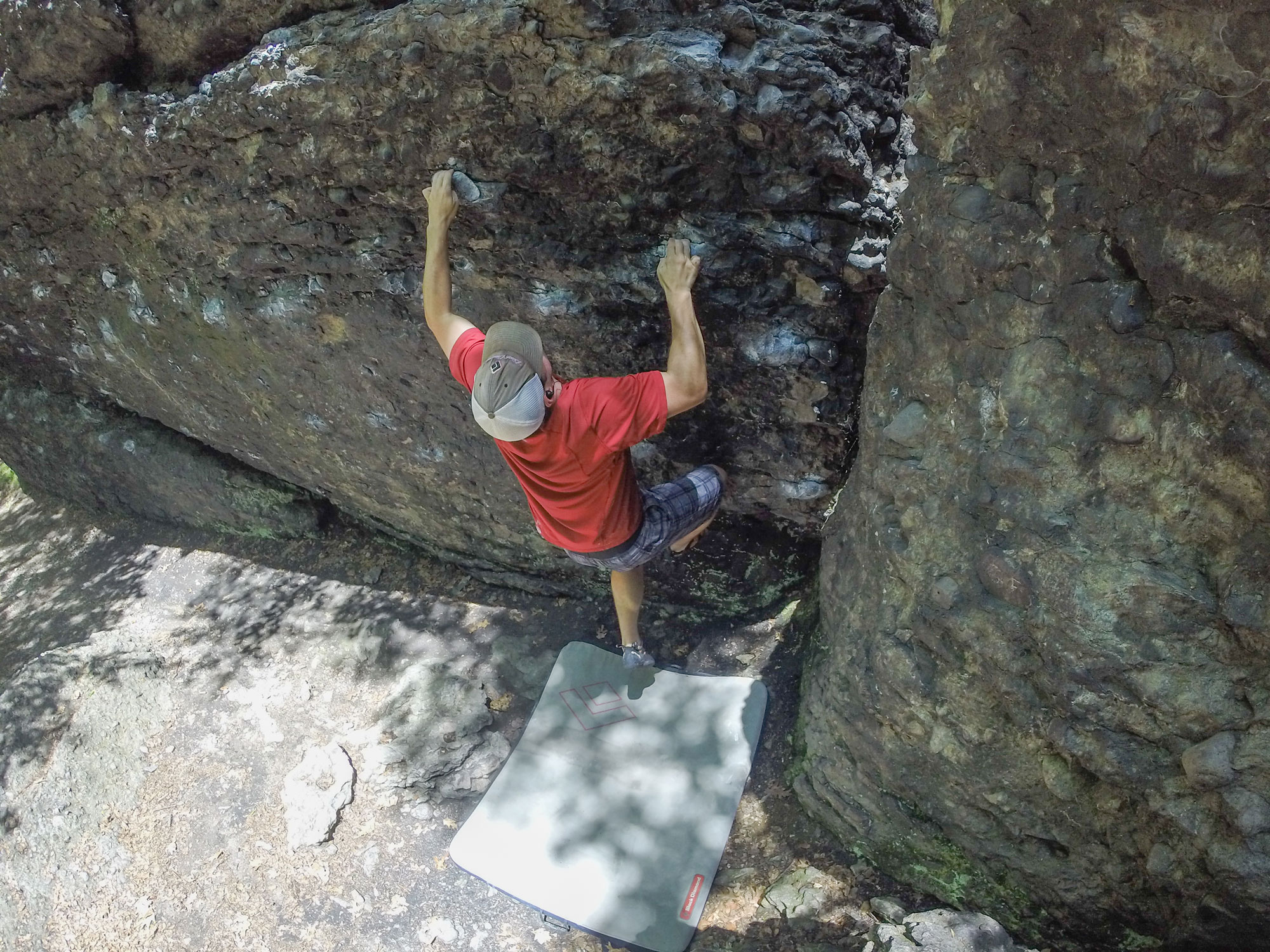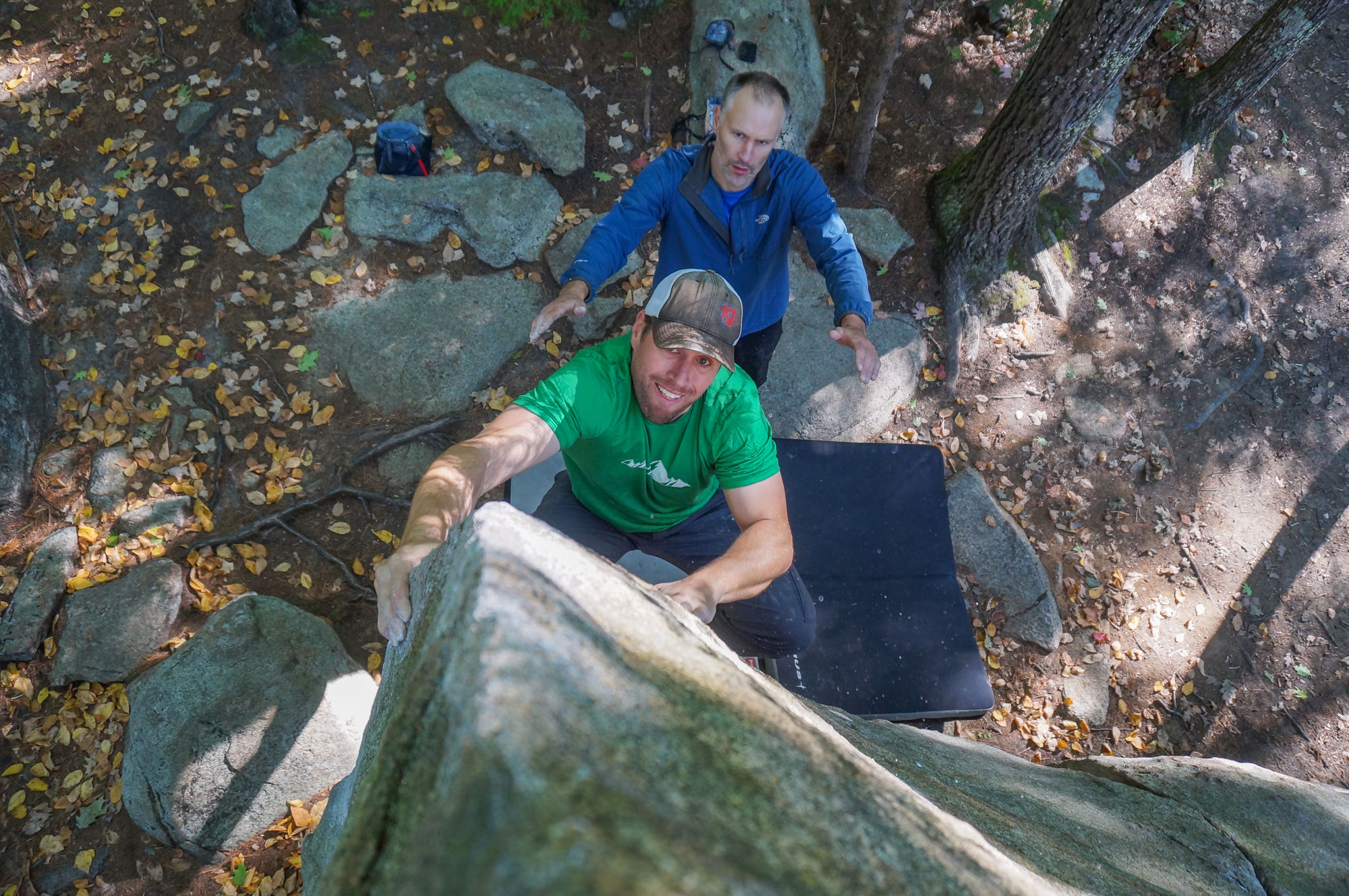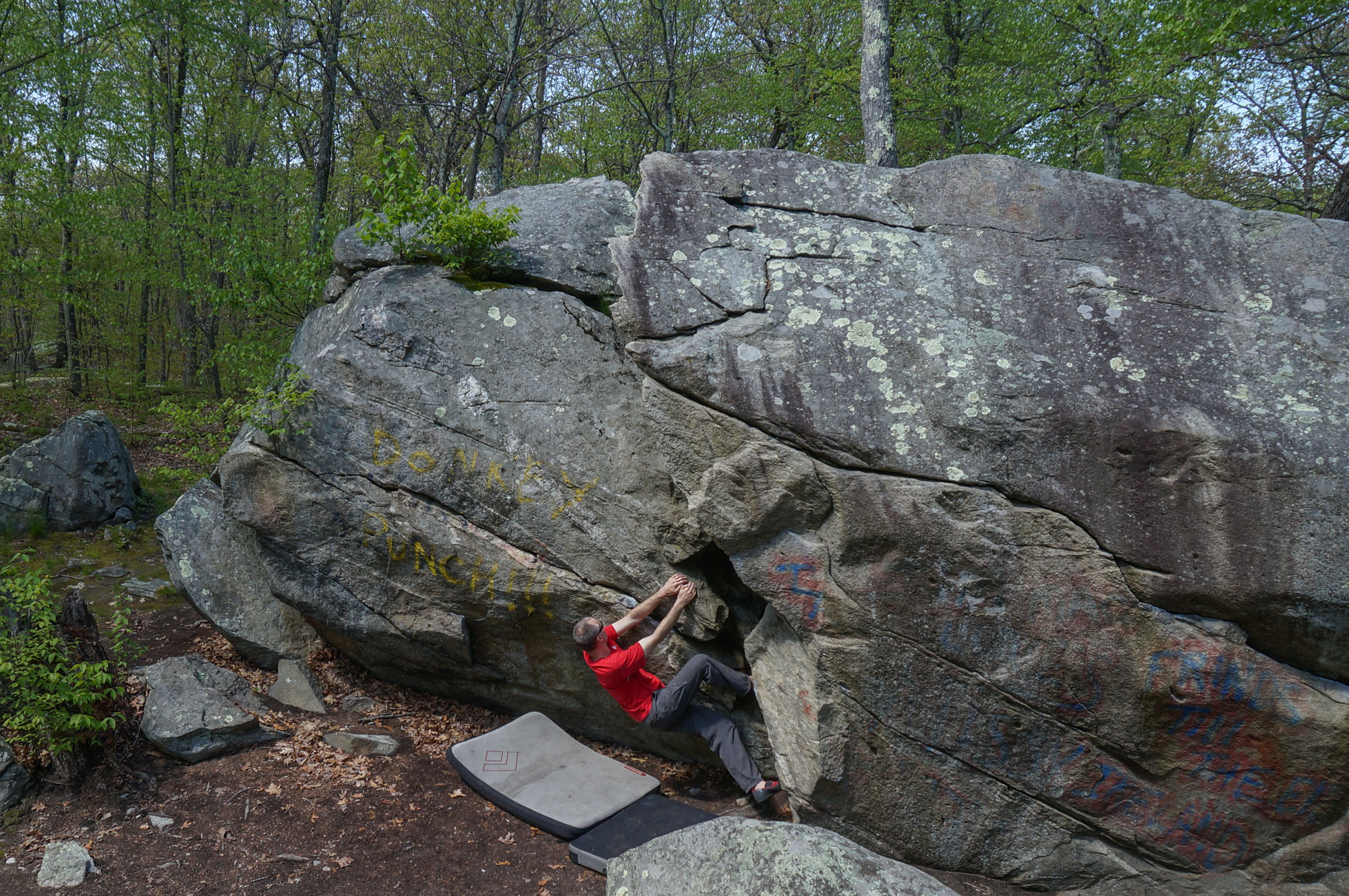Spring is when most boulderers leave the cozy confines of the rock gym and return to climbing on real rock. Pulling on plastic over the winter is great for getting strong and preparing to send your project, however, it’s also often a place where our outdoor etiquette erodes. If you need a quick refresher on bouldering etiquette, clean up your act before bouldering season with these guidelines for being the best (behaved) boulderer at the crag this year.

1. Save the Screaming
Climbers like Chris Sharma and Adam Ondra are almost as well known for their screams and grunts as they are for ticking the world’s hardest boulder problems. That said, when you’re trying to send your outdoor project, try to keep excessive noise to a minimum. Climber noise—from power screams to venting frustration to playing loud music—is often seen as obnoxious, especially by non-climbers like dog walkers and hikers. There’s no need to talk in hushed tones or whispers, of course—just make sure to be respectful of others.
2. Stop the Sprawl
In recent years, bouldering has grown in popularity and it’s now common to find crowds at the crag, especially when you show up to popular bouldering spots like Lincoln Woods and Pawtuckaway. Keeping all your belongings—shoes, brushes, layers, lunch, etc.—organized and contained helps make room for more climbers, avoids getting your gear mixed up with others’ stuff, and lowers the odds of trash getting left behind.

3. Proper Pad Placement
The outdoors lacks the massive pads and cushy floors found in most gyms, which makes pad placement a particularly valuable skill. Outdoors boulderers will want to place crash pads where a climber is most likely to fall. When placing a pad, create as level a landing as possible, adjusting the pad accordingly as the climber progresses on the route. If placing multiple pads next to each other, try to avoid gaps. Be sure to also keep track of what you’re placing your pads on—they can damage vegetation like grass, flowers, and bushes which can have the unwanted effect of irritating landowners.
4. Become a Super Spotter
Superior spotting skills are just as valuable in bouldering as a plus “ape index.” The best spotters help keep their climbing partners safe. Make sure your spotting skills are up to snuff and remember to pay attention when your partners are climbing. If a climber is falling, move the pads underneath them, guide them onto the pads, and keep them away from hazards like rocks and trees.
5. Clean Up After Yourself
There’s no denying that tick marks (chalk used to indicate a hand or foothold) are extremely helpful when trying to send your project—it’s why you see so many of them! Unfortunately, they’re also an eyesore and possibly unusable for the next climber. Before leaving a boulder, make sure to reduce your visual impact by brushing off any tick marks you made.

6. Respect Other Climbers
It’s common for classic problems to attract a crowd and, unlike sport and trad climbs, it’s quite easy for multiple parties to work a problem at the same time. There are even some benefits, like additional pads, extra spotters, and fresh beta. If you’re approaching a crowded boulder that other climbers are sessioning, ask to work in and take turns as they naturally occur. If you’re working a climb and someone asks to try it, make room, and treat them how you would hope someone would behave toward you.
7. Move Along
Sometimes an area is simply too busy. If things are out of hand when you arrive, it’s worth considering sessioning instead at your obscure out-of-the-way project, coming back later in the day, trying another area, or even switching to an entirely different activity that day. Would you rather sacrifice one day of (over-crowded) bouldering or risk long-term access to a favorite area? For example, the property owner of the Pound, a popular, privately owned roadside bouldering area near Rumney, closed access at the beginning of the pandemic due to increased pressure following the closure of the cliffs and has yet to reopen it to boulderers.
8. Stay Positive
Don’t squash others’ stoke. If someone needs help or advice, do your best to help out. And if a climber just sent their project, don’t start yammering about how easy it was for you. Be kind and supportive, and others will be too.

9. Respect Area Rules
Know the rules of the bouldering area and follow them—for example, if an area is posted “no pets,” leave your crag dog home. Some other steps you can take to become a better-behaved boulderer and preserve everybody’s access to areas are to respect hours of operation (found in some parks), pay any necessary fees, and park appropriately.
10. Lead By Example
Practicing good bouldering etiquette doesn’t mean you can’t have any fun. You can enjoy your time outside at one of New England’s many great bouldering areas while also being mindful of how your actions affect the experience of others and ultimately access to these places. After all, losing your favorite bouldering area is the antithesis of fun.
One of the best steps we can take to ensure good bouldering etiquette is to practice it ourselves. People often take their cues from others, and boulderers are no different. Leading by example provides a model for other climbers and is an unobtrusive and easy way to be a good steward of climbing etiquette.
Do you have an etiquette tip you would like to see boulderers practice? We want to hear it! Leave it in the comments below.
Tim Peck and Doug Martland
Tim and Doug met long ago at the Eastern Mountain Sports in Canton, Massachusetts. Bonding over a love of slick Quincy Quarry granite, White Mountain sufferfests, and scheming up adventures while folding tee-shirts, today Tim and Doug collaborate to write about their favorite outdoor activities and occasionally get nostalgic about tee-shirt tables.
Related Posts
April 2, 2024
10 Tips for Mountain Biking Etiquette During Mud Season
One rough spring could ruin the…




